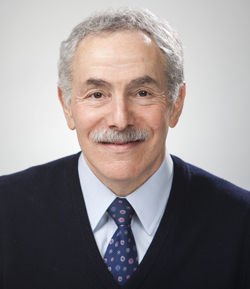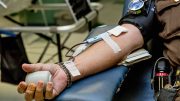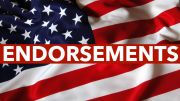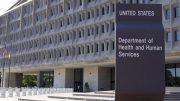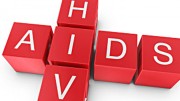BOSTON, Mass. — New HIV infections held steady at about 50,000 in 2010, the CDC reported last month, but new infections among gay, bisexual and other men who have sex with men (MSM) are up 12% from 2008 to 2010. MSM represented 64% of new infections in 2010 compared with 61% in 2009, even though MSM comprise only 2% of the adult population. New infections were up 22% from 2008 to 2010 among MSM age 13 to 24.
Despite the disproportionate burden of HIV among MSM, especially Black MSM, targeted HIV prevention is largely targeted toward heterosexuals and other risk groups, according to an analysis conducted by The Fenway Institute last year at the request of Funders Concerned About AIDS and amFAR. That analysis found that:
- In a 2009 Wisconsin case study, among Blacks, male on male sex accounted for 58% of HIV diagnoses that year. Yet Black gay men only received 19% of targeted tests, and made up only 11% of HIV prevention clients.
- Only 27% of HIV education and risk reduction funding was targeted toward MSM, according to a 2011 Centers for Disease Control analysis; 38% was targeted toward high-risk heterosexuals, while 20% was not targeted or was targeted toward other risk groups.
- Only 16% of National Institutes of Health funding for HIV that was targeted to a specific risk group was allotted to MSM, according to a 2011 report by the White House Office of National AIDS Policy.
“The HIV epidemic is increasingly impacting gay and bisexual men, especially Black men and young men, despite new advances in treatment and prevention,” said Kenneth Mayer, MD, Medical Research Director and Co-Chair of The Fenway Institute. “We must redouble our efforts to prevent HIV among gay men by shifting prevention funding to more closely match the incidence data.” Many working in AIDS policy on the federal level are aware that prevention with MSM is underfunded and are working to change this. Dr. Kevin Fenton, Director of the CDC’s National Center for HIV/AIDS, Viral Hepatitis, STD and TB Prevention for the past seven years, recently acknowledged that funding for prevention and research with gay men was “about half of what it should be.” “Our own stigma, our own homophobia,” Fenton said, “cascades down in our funding and allocations, intentionally or unintentionally resulting in underfunding of gay men’s work across the country.” (Source, The Georgia Voice, March 30, 2012.)
The CDC recently launched new behavioral intervention programs aimed at Black gay men and transgender women. The CDC’s pro-HIV testing ads feature positive images of gay men of color. However, these don’t challenge the anti-gay prejudice that increases young gay men’s vulnerability to HIV and still discourages HIV testing in many communities.
HIV is just one of many health disparities affecting gay youth. Many correlate with experiences of being bullied or socially isolated. Lesbian, gay, bisexual and transgender (LGBT) youth are at greater risk than their heterosexual peers of violence and victimization, self-harm, substance abuse, sexually risky behavior and school absences because they feel unsafe.
There are a number of resiliency factors linked to lower rates of risk behavior among LGBT youth. These include having openly gay
role models among teachers, school staff or family; having nondiscrimination and anti-bullying policies in schools, and family acceptance — especially parental acceptance. Young people who have these supports are less likely to have unprotected sex, multiple sexual partners, abuse substances, suffer from depression or be homeless.
“The Obama administration has the power to change the current dynamic, in which gay men are more than 40 times as likely as their straight counterparts to become HIV infected,” said Sean Cahill, PhD, Director of Health Policy Research at The Fenway Institute. “The Centers for Disease Control could challenge anti-gay stigma as the public health threat that it is, through innovative social marketing campaigns aimed at shifting social norms related to anti-gay prejudice. The CDC and public health departments should fund campaigns and interventions that promote parental acceptance of gay sons as a resiliency factor that can be protective against HIV infection.”
Pre-exposure prophylaxis (PrEP), which the US Food and Drug Administration recently approved, can significantly reduce HIV’s prevalence among gay men — and research shows that both Black and Latino men are willing to use it. The expansion of access to Medicaid for adults up to 133% of the federal poverty level is critical to the ability of low-income LGBT people to access health care — including preventive care. Further funding is also badly needed for screenings to diagnose and treat sexually transmitted diseases, as well as to vaccinate against diseases that either increase HIV susceptibility, or are more harmful to HIV-infected persons.
For more than forty years, Fenway Health has been working to make life healthier for the people in our neighborhood, the LGBT community, people living with HIV/AIDS and the broader population. The Fenway Institute at Fenway Health is an interdisciplinary center for research, training, education and policy development focusing on national and international health issues. Fenway’s Sidney Borum Jr. Health Center cares for youth and young adults ages 12 to 29 who may not feel comfortable going anywhere else, including those who are LGBT or just figuring things out; homeless or living on the streets; struggling with substance use or abuse; sex workers; or living with HIV/AIDS.
[From a News Release]

